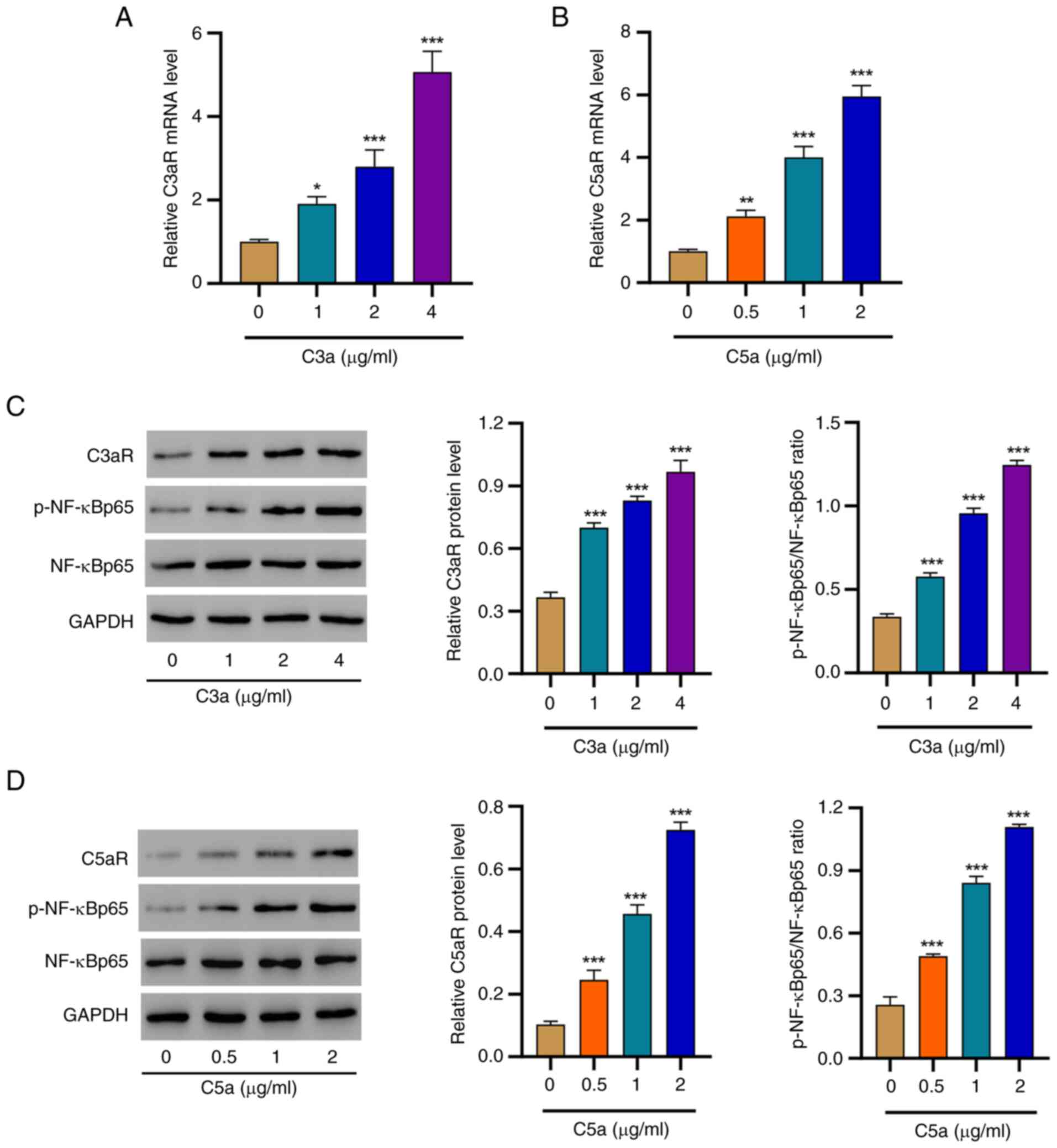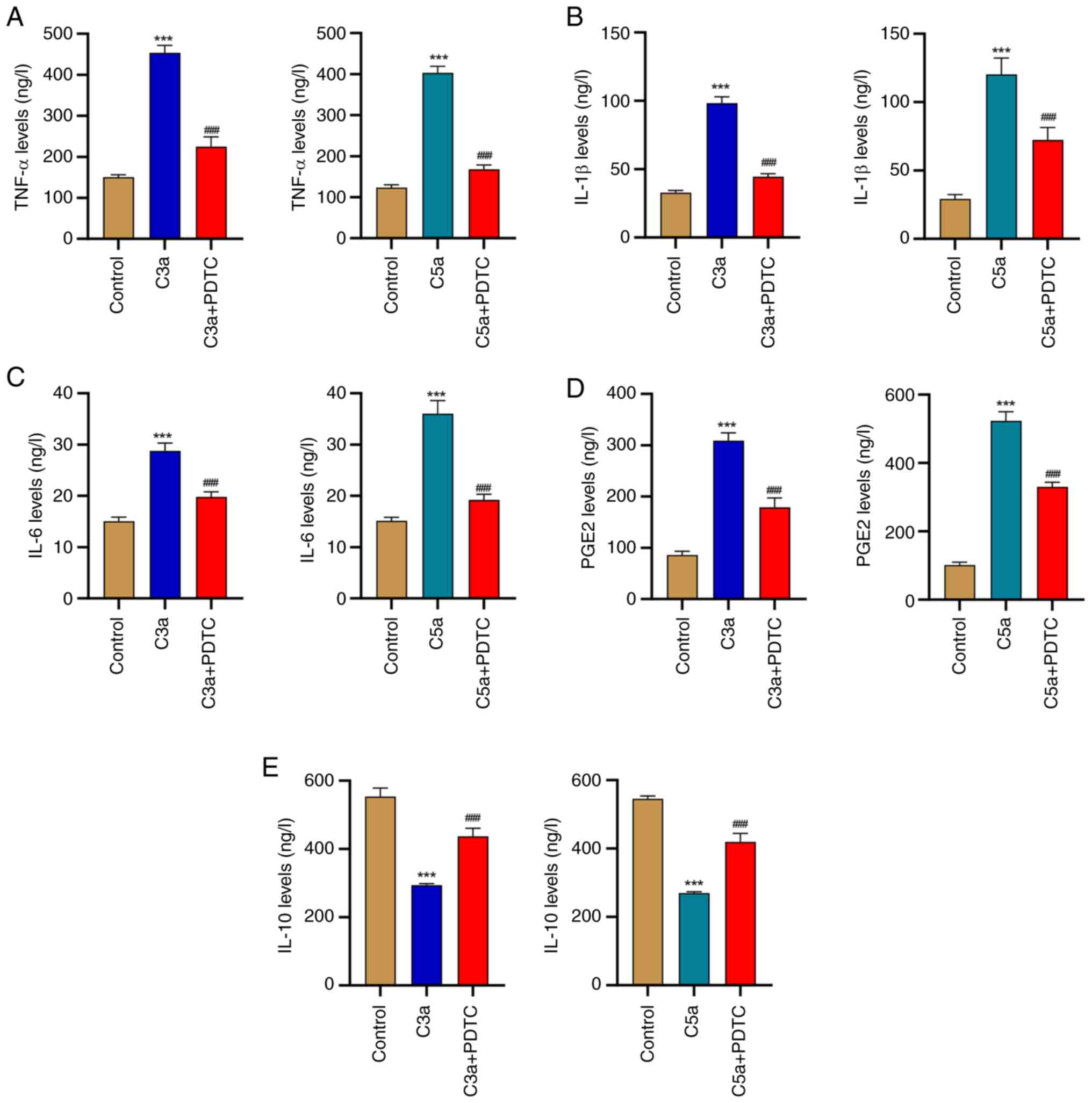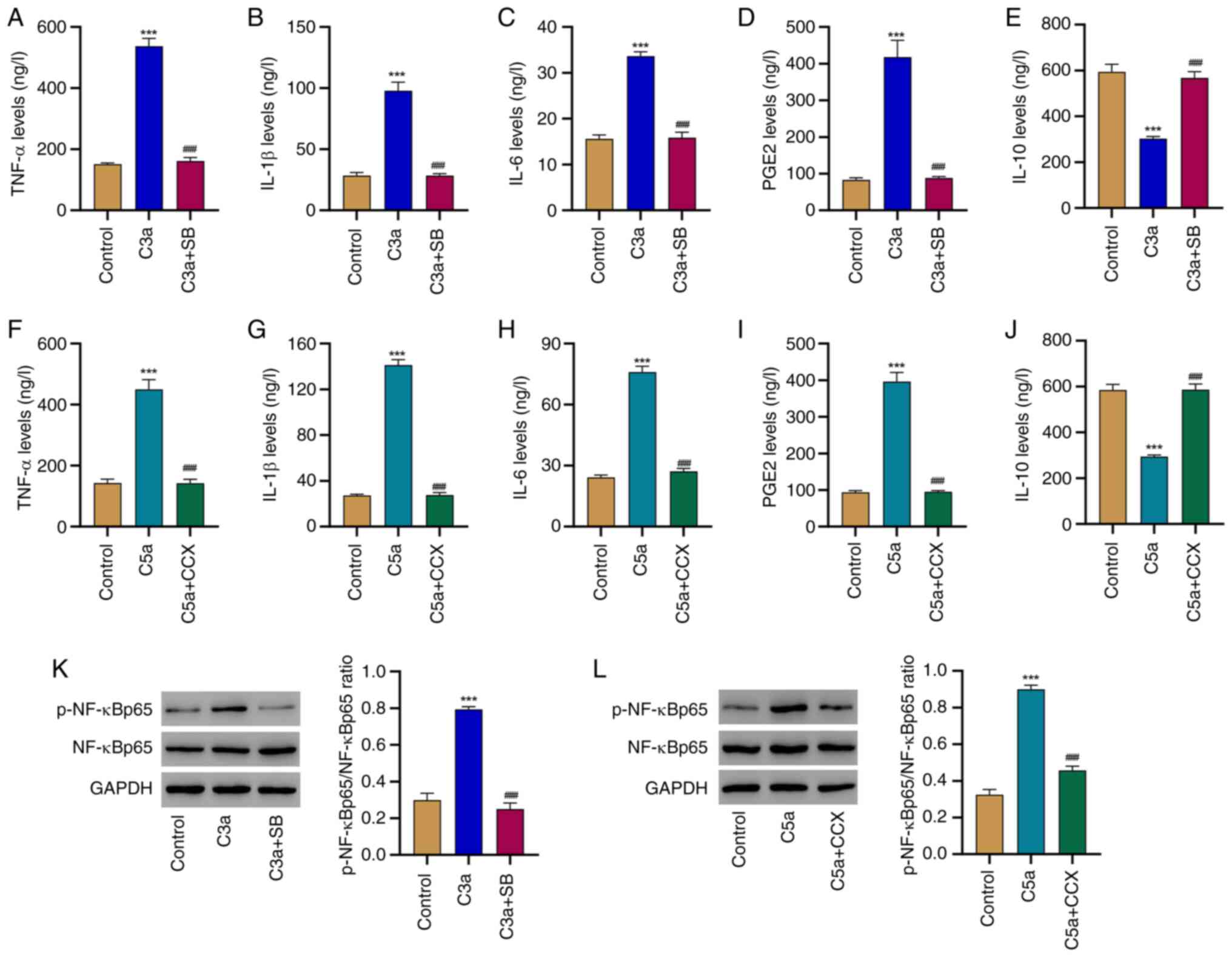|
1
|
Leach LL and Clegg DO: Concise review:
Making stem cells retinal: Methods for deriving retinal pigment
epithelium and implications for patients with ocular disease. Stem
Cells. 33:2363–2373. 2015.PubMed/NCBI View Article : Google Scholar
|
|
2
|
Xu H, Lutrin D and Wu Z: Outcomes of
23-gauge pars plana vitrectomy combined with phacoemulsification
and capsulotomy without intraocular lens implantation in
rhegmatogenous retinal detachment associated with choroidal
detachment. Medicine (Baltimore). 96(e7869)2017.PubMed/NCBI View Article : Google Scholar
|
|
3
|
Xu C, Wu J and Feng C: Changes in the
postoperative foveal avascular zone in patients with rhegmatogenous
retinal detachment associated with choroidal detachment. Int
Ophthalmol. 40:2535–2543. 2020.PubMed/NCBI View Article : Google Scholar
|
|
4
|
Wu Z, Ding N, Yu M, Wang K, Luo S, Zou W,
Zhou Y, Yan B and Jiang Q: Identification of potential biomarkers
for rhegmatogenous retinal detachment associated with choroidal
detachment by vitreous iTRAQ-based proteomic profiling. Int J Mol
Sci. 17(2052)2016.PubMed/NCBI View Article : Google Scholar
|
|
5
|
Klettner A and Roider J: Retinal pigment
epithelium expressed toll-like receptors and their potential role
in age-related macular degeneration. Int J Mol Sci.
22(8387)2021.PubMed/NCBI View Article : Google Scholar
|
|
6
|
Al-Nawaiseh S, Thieltges F, Liu Z, Strack
C, Brinken R, Braun N, Wolschendorf M, Maminishkis A, Eter N and
Stanzel BV: A step by step protocol for subretinal surgery in
rabbits. J Vis Exp. (53927)2016.PubMed/NCBI View
Article : Google Scholar
|
|
7
|
Dai Y, Wu Z, Sheng H, Zhang Z, Yu M and
Zhang Q: Identification of inflammatory mediators in patients with
rhegmatogenous retinal detachment associated with choroidal
detachment. Mol Vis. 21:417–427. 2015.PubMed/NCBI
|
|
8
|
Strauss O: The retinal pigment epithelium
in visual function. Physiol Rev. 85:845–881. 2005.PubMed/NCBI View Article : Google Scholar
|
|
9
|
Yu M, Zou W, Peachey NS, McIntyre TM and
Liu J: A novel role of complement in retinal degeneration. Invest
Ophthalmol Vis Sci. 53:7684–7692. 2012.PubMed/NCBI View Article : Google Scholar
|
|
10
|
Ao J, Wood JP, Chidlow G, Gillies MC and
Casson RJ: Retinal pigment epithelium in the pathogenesis of
age-related macular degeneration and photobiomodulation as a
potential therapy? Clin Exp Ophthalmol. 46:670–686. 2018.PubMed/NCBI View Article : Google Scholar
|
|
11
|
Luo S, Chen Y, Yang L, Gong X and Wu Z:
The complement system in retinal detachment with choroidal
detachment. Curr Eye Res. 1–14. 2022.PubMed/NCBI View Article : Google Scholar : (Epub ahead of
print).
|
|
12
|
Wang J, Wang Y, Yu D, Liu Q, Lin S, Tian
R, Li J and Luo Y: Protective effect of a bispecific Fc-fusion
protein on the barrier of human retinal pigment epithelial cells.
Ophthalmic Res. 64:656–663. 2021.PubMed/NCBI View Article : Google Scholar
|
|
13
|
Schmittgen TD and Livak KJ: Analyzing
real-time PCR data by the comparative C(T) method. Nat Protoc.
3:1101–1108. 2008.PubMed/NCBI View Article : Google Scholar
|
|
14
|
Hollborn M, Ackmann C, Kuhrt H, Doktor F,
Kohen L, Wiedemann P and Bringmann A: Osmotic and hypoxic induction
of the complement factor C9 in cultured human retinal pigment
epithelial cells: Regulation of VEGF and NLRP3 expression. Mol Vis.
24:518–535. 2018.PubMed/NCBI
|
|
15
|
Busch C, Annamalai B, Abdusalamova K,
Reichhart N, Huber C, Lin Y, Jo EAH, Zipfel PF, Skerka C, Wildner
G, et al: Anaphylatoxins activate Ca2+, Akt/PI3-kinase,
and FOXO1/FoxP3 in the retinal pigment epithelium. Front Immunol.
8(703)2017.PubMed/NCBI View Article : Google Scholar
|
|
16
|
Song D, Ueda Y, Bhuyan R, Mohammed I, Miwa
T, Gullipali D, Kim H, Zhou L, Song Y, Schultz H, et al: Complement
factor H mutation W1206R causes retinal thrombosis and ischemic
retinopathy in mice. Am J Pathol. 189:826–838. 2019.PubMed/NCBI View Article : Google Scholar
|
|
17
|
Bamberg CE, Mackay CR, Lee H, Zahra D,
Jackson J, Lim YS, Whitfeld PL, Craig S, Corsini E, Lu B, et al:
The C5a receptor (C5aR) C5L2 is a modulator of C5aR-mediated signal
transduction. J Biol Chem. 285:7633–7644. 2010.PubMed/NCBI View Article : Google Scholar
|
|
18
|
Thurman JM, Lenderink AM, Royer PA,
Coleman KE, Zhou J, Lambris JD, Nemenoff RA, Quigg RJ and Holers
VM: C3a is required for the production of CXC chemokines by tubular
epithelial cells after renal ishemia/reperfusion. J Immunol.
178:1819–1828. 2007.PubMed/NCBI View Article : Google Scholar
|
|
19
|
Ahamed J, Venkatesha RT, Thangam EB and
Ali H: C3a enhances nerve growth factor-induced NFAT activation and
chemokine production in a human mast cell line, HMC-1. J Immunol.
172:6961–6968. 2004.PubMed/NCBI View Article : Google Scholar
|
|
20
|
Martin CB, Ingersoll SA and Martin BK:
Transcriptional control of the C3a receptor gene in glial cells:
Dependence upon AP-1 but not Ets. Mol Immunol. 44:703–712.
2007.PubMed/NCBI View Article : Google Scholar
|
|
21
|
Jo DH, Cho CS and Kim JH and Kim JH:
Intracellular amyloid-β disrupts tight junctions of the retinal
pigment epithelium via NF-κB activation. Neurobiol Aging.
95:115–122. 2020.PubMed/NCBI View Article : Google Scholar
|
|
22
|
Feng Q, Yang W, Gao Z, Ruan X and Zhang Y:
Up-regulation of P-gp via NF-κB activation confers protection
against oxidative damage in the retinal pigment epithelium cells.
Exp Eye Res. 181:367–373. 2019.PubMed/NCBI View Article : Google Scholar
|
|
23
|
Hu Y, Lin H, Dib B, Atik A, Bouzika P, Lin
C, Yan Y, Tang S, Miller JW and Vavvas DG: Cholesterol crystals
induce inflammatory cytokines expression in a human retinal pigment
epithelium cell line by activating the NF-κB pathway. Discov Med.
18:7–14. 2014.PubMed/NCBI
|
|
24
|
Armento A, Schmidt TL, Sonntag I, Merle
DA, Jarboui MA, Kilger E, Clark SJ and Ueffing M: CFH loss in human
RPE cells leads to inflammation and complement system dysregulation
via the NF-κB pathway. Int J Mol Sci. 22(8727)2021.PubMed/NCBI View Article : Google Scholar
|
|
25
|
Machemer R, Aaberg TM, Freeman HM, Irvine
AR, Lean JS and Michels RM: An updated classification of retinal
detachment with proliferative vitreoretinopathy. Am J Ophthalmol.
112:159–165. 1991.PubMed/NCBI View Article : Google Scholar
|
|
26
|
Bröker K, Terzenbach R, Bentzien F, Lüth S
and Dammermann W: Complement factors C3a and C5a mimick a
proinflammatory microenvironment and increase HBV IGRA sensitivity.
J Transl Med. 17(6)2019.PubMed/NCBI View Article : Google Scholar
|
|
27
|
Huang Y, Enzmann V and Ildstad ST: Stem
cell-based therapeutic applications in retinal degenerative
diseases. Stem Cell Rev Rep. 7:434–445. 2011.PubMed/NCBI View Article : Google Scholar
|
|
28
|
Murakami Y, Notomi S, Hisatomi T, Nakazawa
T, Ishibashi T, Miller JW and Vavvas DG: Photoreceptor cell death
and rescue in retinal detachment and degenerations. Prog Retin Eye
Res. 37:114–140. 2013.PubMed/NCBI View Article : Google Scholar
|
|
29
|
Strainic MG, Liu J, Huang D, An F, Lalli
PN, Muqim N, Shapiro VS, Dubyak GR, Heeger PS and Medof ME: Locally
produced complement fragments C5a and C3a provide both
costimulatory and survival signals to naive CD4+ T cells. Immunity.
28:425–435. 2008.PubMed/NCBI View Article : Google Scholar
|
|
30
|
Ricklin D, Hajishengallis G, Yang K and
Lambris JD: Complement: A key system for immune surveillance and
homeostasis. Nat Immunol. 11:785–797. 2010.PubMed/NCBI View
Article : Google Scholar
|
|
31
|
Wu KY, Zhang T, Zhao GX, Ma N, Zhao SJ,
Wang N, Wang JX, Li ZF, Zhou W and Li K: The C3a/C3aR axis mediates
anti-inflammatory activity and protects against uropathogenic E
coli-induced kidney injury in mice. Kidney Int. 96:612–627.
2019.PubMed/NCBI View Article : Google Scholar
|
|
32
|
Luo JL, Kamata H and Karin M:
IKK/NF-kappaB signaling: Balancing life and death-a new approach to
cancer therapy. J Clin Invest. 115:2625–2632. 2005.PubMed/NCBI View
Article : Google Scholar
|
|
33
|
Sun SC and Liu ZG: A special issue on
NF-κB signaling and function. Cell Res. 21:1–2. 2011.PubMed/NCBI View Article : Google Scholar
|
|
34
|
Liu T, Zhang L, Joo D and Sun SC: NF-κB
signaling in inflammation. Signal Transduct Target Ther.
2(17023)2017.PubMed/NCBI View Article : Google Scholar
|
|
35
|
Ling J and He P: miR-361-5p regulates
ovarian cancer cell proliferation and apoptosis by targeting TRAF3.
Exp Ther Med. 21(199)2021.PubMed/NCBI View Article : Google Scholar
|
|
36
|
Liu Y, Wang K, Liang X, Li Y, Zhang Y,
Zhang C, Wei H, Luo R, Ge S and Xu G: Complement C3 produced by
macrophages promotes renal fibrosis via IL-17A secretion. Front
Immunol. 9(2385)2018.PubMed/NCBI View Article : Google Scholar
|
|
37
|
Dewan SMR, Osaka M, Deushi M and Yoshida
M: Complement C5a-triggered differentiated HL-60 stimulates
migration of THP-1 monocytic leukocytes via secretion of CCL2. FEBS
Open Bio. 11:1374–1381. 2021.PubMed/NCBI View Article : Google Scholar
|
|
38
|
Luo C, Zhao J, Chen M and Xu H: The
expression of C1 inhibitor (C1INH) in macrophages is upregulated by
retinal pigment epithelial cells-implication in subretinal immune
privilege in the aging eye. Aging (Albany NY). 10:1380–1389.
2018.PubMed/NCBI View Article : Google Scholar
|
|
39
|
Zhao Q, Ji M and Wang X: IL-10 inhibits
retinal pigment epithelium cell proliferation and migration through
regulation of VEGF in rhegmatogenous retinal detachment. Mol Med
Rep. 17:7301–7306. 2018.PubMed/NCBI View Article : Google Scholar
|



















